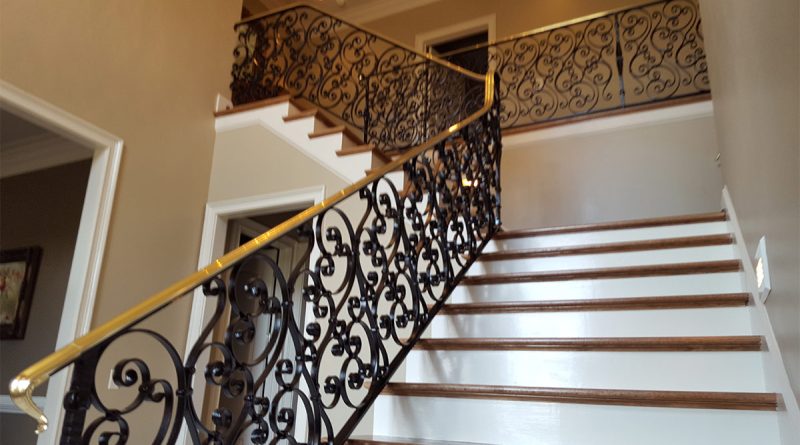Railing Installation Essentials for Birmingham Homes
In Birmingham, the installation of railings serves as both a functional and aesthetic addition to residential and commercial properties alike. The process of railing installation in Birmingham involves carefully selecting the right materials and ensuring proper installation to enhance safety, security, and visual appeal.
From traditional wrought iron railings to modern glass designs, property owners in Birmingham have a wide range of options to choose from. In this guide, we’ll explore the various aspects of railing installation in Birmingham, covering everything from the types of railings available to the importance of professional installation and maintenance tips for longevity.
Whether you’re considering adding railings to a staircase, balcony, or terrace, understanding the fundamentals of railing installation in Birmingham is essential to achieving the desired outcome.
Types of Railings
Metal Railings
Metal railings, such as wrought iron or aluminum, are popular for their durability and classic look. They offer excellent strength and can withstand harsh weather conditions, making them ideal for outdoor installations.
Wooden Railings
Wooden railings provide a warm and inviting appearance to any space. They are versatile and can be customized to match the style of your home. However, they require regular maintenance to prevent rot and decay.
Glass Railings
Glass railings offer a modern and sleek aesthetic while providing unobstructed views. They are easy to clean and maintain, making them a popular choice for contemporary homes and commercial buildings.
Choosing the Right Railing for Your Property
When it comes to choosing the right railing for your property in Birmingham, several factors come into play to ensure you make the best decision. Firstly, consider the architectural style and design aesthetic of your property. Whether it’s a traditional, Victorian-style home or a contemporary, minimalist building, selecting a railing that complements the overall look is essential.
Next, think about the primary purpose of the railing. Is it primarily for safety, such as enclosing a balcony or staircase, or is it more for decorative purposes? Understanding the intended function will help narrow down your options.
Durability and maintenance requirements are also crucial considerations. Birmingham experiences a range of weather conditions throughout the year, so opting for a material that can withstand exposure to rain, wind, and sunlight is important. Additionally, consider the level of upkeep you’re willing to commit to. While some materials, like metal, may require minimal maintenance, others, such as wood, may need regular sealing or staining to prevent deterioration.
Budget is another factor to keep in mind. The cost of railing materials can vary significantly, so it’s essential to determine how much you’re willing to invest in your railing project.
Lastly, don’t forget about local building codes and regulations. Ensure that the railing you choose meets all safety standards and requirements set forth by the city of Birmingham.
By carefully considering these factors, you can select the perfect railing for your property in Birmingham that not only enhances its appearance but also provides the necessary functionality and durability for years to come.
Preparing for Installation
Before beginning the installation process, assess the installation area and make any necessary repairs or adjustments. Clear the space of any obstacles and ensure adequate ventilation for the installation process.
Tools and Materials Needed
Gather the necessary tools and materials for the installation, including measuring tape, drill, screws, brackets, railing components, and safety gear such as gloves and goggles.
Steps for Installation
Step 1: Measurement and Planning
Accurately measure the installation area and plan the layout of the railings. Consider factors such as height, spacing, and alignment to ensure a precise fit.
Step 2: Marking the Installation Points
Mark the positions for the posts and brackets using a pencil or chalk. Ensure that the markings are level and aligned according to the planned layout.
Step 3: Preparing the Surface
Clean the installation surface and remove any debris or obstructions. If necessary, apply a primer or sealant to protect the surface from moisture and corrosion.
Step 4: Installing Posts
Secure the posts in place using screws or anchors, ensuring that they are level and plumb. Use a spirit level to check for accuracy during installation.
Step 5: Attaching the Rails
Attach the rails to the posts using brackets or connectors, ensuring a secure and stable connection. Double-check the alignment and spacing of the rails before finalizing the installation.
Step 6: Adding Finishing Touches
Inspect the completed installation for any defects or loose components. Make any necessary adjustments and add decorative elements or finishes to enhance the appearance of the railings.
Maintenance Tips for Longevity
To prolong the lifespan of your railings, regularly inspect them for signs of wear or damage. Clean them periodically with mild soap and water, and repair any chips or scratches to prevent corrosion.
Importance of Professional Installation
While DIY installation may seem cost-effective, hiring a professional ensures proper installation and compliance with building codes. Professionals have the expertise and equipment to handle complex installations safely and efficiently.
Enhancing Safety Measures
In addition to installing railings, consider other safety measures such as installing handrails, adding non-slip surfaces, and ensuring adequate lighting in high-traffic areas.
Cost Considerations
The cost of railing installation in Birmingham varies depending on factors such as material, size, complexity, and labor costs. Obtain quotes from multiple contractors and compare their services before making a decision.
Conclusion
Railing installation in Birmingham is a worthwhile investment that enhances both the aesthetics and safety of your property. By choosing the right railing material, ensuring proper installation, and following maintenance guidelines, you can enjoy your railings for years to come.

